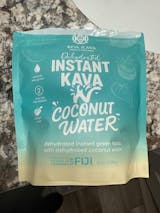I want to start off by saying this instant kava really is SO convenient. Flavor is a lot more mild than traditional kava. Do I think it’s worth how expensive it is? I do not. I had 3 servings of this instant kava and still didn’t seem nearly as potent/strong as 1 serving of traditional kava. Love this company tho!! Hopefully this helps (:
It tastes worse than other kava I’ve tried (not that any of them taste good), but the calming effect is worth it. I make x it with coconut water, which greatly improves the taste and replenishes electrolytes lost by consuming kava. Always drink lots of water when using kava.
The instant variety works much better for me, and it’s super easy. Good price when combined with subscription. Recommended!!
I have been drinking kawa for many years and I know good kawa. This kawa is excellent. Smooth and strong. I like the Tongan, looking forward to trying the Fijian.
I really liked this one! It made me feel good and mixed to a nice dark brown. Great for relaxing before bed without being totally knocked out haha

